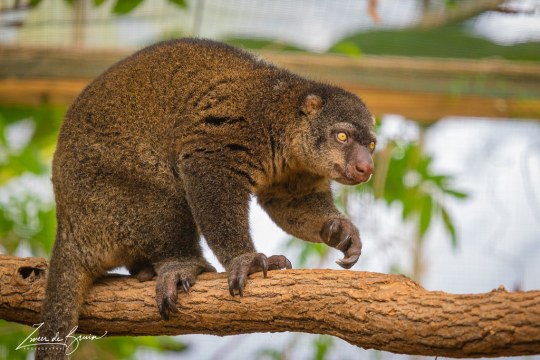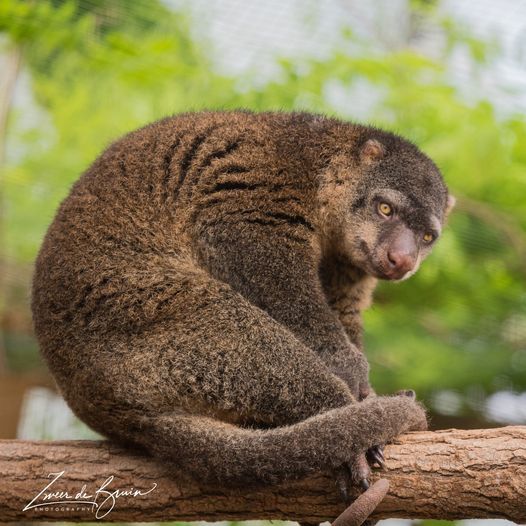#ailurops
Explore tagged Tumblr posts
Text

A Sulawesi bear cuscus (Ailurops ursinus) in Pairi Daiza Zoo, Belgium
by safi kok
#sulawesi bear cuscus#cuscus#possums#marsupials#ailurops ursinus#ailurops#Phalangeridae#diprotodontia#marsupialia#mammalia#chordata#captive animal#pairi daiza
113 notes
·
View notes
Text


This animal was requested!
#critically endangered#salibabu island#talaud islands#indonesia#mammalia#mammal#mammals#marsupialia#marsupial#diprotodontia#phalangeridae#talaud spotted cuscus
57 notes
·
View notes
Text

Sulawesi bear cuscus (Ailurops ursinus), Indonesia
33 notes
·
View notes
Text
I absolutely love your art but I don't think it quite does justice to how ridiculous the Sulawesi Bear Cuscus (Ailurops ursinus, bottom right) actually looks

No thoughts head empty

So I ENTIRELY forgot to post these when I finished them but here's a whole other collection of Australian marsupials!
#animals#mammals#marsupials#s o: australidelphia#o: diprotodontia#s o: macropodiformes#s o: vombatiformes#s o: phalangeriformes#golden–mantled tree-kangaroo#sugar glider#koala#common ringtail possum#swamp wallaby#rufous rat–kangaroo#red kangaroo#bare–nosed wombat#mountain pygmy possum#sulawesi bear cuscus
48 notes
·
View notes
Photo








성열 & 곰 쿠스쿠스!! ㅎㅎ
17 notes
·
View notes
Photo

Meet the Sulawesi bear cuscus (Ailurops ursinus)! Despite its name, this critter isn’t actually a bear. It’s an arboreal marsupial that lives in tropical forests throughout parts of Indonesia. It uses its long claws and prehensile tail to aid it in cruising between branches in the canopy. What’s daily life like for this animal? It moves slowly and spends a good deal of its time resting and digesting all of the fruits, flowers, and leaves that it eats. Photo: Zweer de Bruin, CC BY-NC-ND 2.0, flickr https://www.instagram.com/p/CU8_K7AAQxH/?utm_medium=tumblr
833 notes
·
View notes
Photo


The Sulawesi Bear Cuscus (Ailurops ursinus) is a leaf eating arboreal marsupial, in the possum family. They are considered “vulnerable,” due to habitat destruction and over-hunting. They are endemic to Indonesian island of Sulawesi.
photograph by Zweer De Bruin | Flickr CC
142 notes
·
View notes
Photo
Photo by Sam Woods

#sourcing#sulawesi bear cuscus#cuscus#ailurops ursinus#ailurops#ailuropinae#phalangeridae#phalangeroidea#phalangeriformes#diprotodontia#metatheria#mammalia#tetrapoda
51 notes
·
View notes
Photo

What in the world is this? It’s a Sulawesi bear cuscus (Ailurops ursinus), one of the thousands of creatures photographed by Nat Geo photographer Joel Sartore for his Photo Ark, the largest collection of animal studio portraits. His goal? To inspire people to care enough to save species from extinction. No wonder he has been called “a modern-day Noah.”
#Animals#photo ark#joel sartore#animal portraits#wildlife photography#nat geo wildlife#nat geo wildlife photographer#rare animals#prevent extinction#help the animals#save the animals#animals in danger
19 notes
·
View notes
Text
Bunaken Island

Bunaken is an island, formerly part of Manado bay, is norther part of Sulawesi province, Indonesia. The visitors can reach Bunaken by speed boat abour 30 minutes from Manado sea port. Around the Bunaken Island, there is Bunaken Sea Garden which is part of Bunaken National Park. Overall, Bunaken is covers an area of 75,265 hectares with five islands within, which is the island of Manado Tua, Bunaken Island, Siladen Island, Mantehage Island island and the branch of it, Naen Island.
Bunaken marine park has 20 points dive spot with varying depth of up to 1344 meters. From those 20 diving points, the 12 points among them are around is Bunaken Island. Those twelve point dive are the most frequently visited by the divers or tourist who want to enjoy the beauty of the underwater scenery.
Most of the 12 points dive in Bunaken Island is line from the southeast to the northwest of the island. In this area, there are great underwater walls, also called the hanging walls, a giant rock walls that stand vertically and curved upward. These rock walls are also a source of food for fish in the waters around Bunaken Island.
While on Bunaken National Park, Bunaken National Park is a representative of Indonesian tropical water ecosystems consist of mangrove ecosystems, seagrass beds, coral reefs, and land / coastal ecosystems. Potential mainland islands national park is rich in species of palm, sago, woka, silar and coconut. Animal species that exist on the mainland and the coast are, Sulawesi black macaques (Macaca nigra nigra), deer (Cervus timorensis russa), and polecat (Ailurops ursinus ursinus).
Mangrove plant species in the Bunaken National Park is Rhizophora sp., Sonneratia sp., Lumnitzera sp., And Bruguiera sp. This forest is rich with various kinds of crab, shrimp, mollusks and various types of sea birds such as seagulls, storks, sea dove and Heron.
Approximately there are 91 species of fish found in the waters of Bunaken National Park, including fish gusumi horse (Hippocampus horse), white oci (Seriola rivoliana), yellow tail lolosi (Lutjanus kasmira), goropa (Ephinephelus spilotoceps and Pseudanthias hypselosoma), ila trunk (Scolopsis bilineatus) , and others.
Bunaken National Park can be reached through the port of Manado, Marina Nusantara Diving Centre (NDC) in the District of Molas and Marina Blue Banter. From the Port of Manado using a motorboat to the Siladen island is about 20 minutes, Bunaken Island about 30 minutes, Montehege island about 50 minutes, and Nian Island about 60 minutes. If the visitors went from Blue Banter Marina with a yacht that is available to the tourist areas on the island of Bunaken, it will be taken within 10-15 minutes, while to go the diving spot from NDC using a speed boat can be reach in 20 minutes.
Source : http://www.indonesia-tourism.com/north-sulawesi/bunaken_national_park.html
3 notes
·
View notes
Photo

Bear Cuscus (Ailurops ursinus) 2016 By D.Frampton 2016
#taxidermist#taxidermy#zoology#biology#mammals#cuscus#museum exhibits#d.frampton taxidermist#d.frampton
21 notes
·
View notes
Text

Sulawesi Bear Cuscus (Ailurops ursinus), family Phalangeridae, found in Sulawesi, Indonesia
Cuscuses are marsupials, related to Brush-tailed Possums.
photograph by Zweer de Bruin
165 notes
·
View notes